Construction of "Asian" Identity in Restaurant Menus: A Case Study
By
2020, Vol. 12 No. 10 | pg. 1/1 AbstractThis paper explores the meaning and implications of “Asian” in the context of American restaurant menus. I determine what kind of language in dish descriptions, specifically ingredients and adjectives, indexes a restaurant or dish as “Asian.” Then, building on Mapes (2018), I observe how “Asianness” is constructed and performed using key discourse strategies, which I divide into two parts: Constructing “The Other” and Constructing “The Comfort Zone.” I then discuss how the construction of “Asianness” indexes the restaurant’s target consumer: a western middle-class cosmopolitan with an appetite for an “exotic” experience with little regard for going deeper than racialized interpretations of the culture they are attempting to experience. 1. IntroductionFood has an undeniable connection to cultural identity, which, of course, includes language. For this study, I focus on food rhetoric, particularly in dish description and labeling by restaurant menus with regards to “Asian” foods. While the term “Asian” is used as a flavor descriptor by many American restaurants, the continent of Asian includes 48 countries with a diversity of flavors that cannot be encompassed in the one “Asian” flavor that appears in so many menu items. Therefore, this study explores the meaning and implications of “Asian” in the context of American restaurant menus. I use the term “Asian” and “Asianness” here in quotes to signal an identity that does not represent any particular ethnic group, but rather one that is represents a western ideological construction of Asian culture. There have been numerous studies of how identity is constructed and indexed through interaction, as well as in mass media, like restaurant menus. In this study, I first determine what kind of language in dish descriptions, specifically ingredients and adjectives, indexes a restaurant or dish as “Asian.” Then, building on Mapes (2018)’s study of the construction of elitism in The New York Times, I observe how Asianness” is constructed and performed using key discourse strategies, which I divide into two parts: Constructing “The Other” and Constructing “The Comfort Zone.” I find that “The Other,” or representation of Asian culture that marks it as differentiating from hegemonic culture, is constructed through evocation of stereotypical imagery, code-mixing of English and non-western languages, and what Elaine Chun (2004) coins as “Mock Asian”—whereas “The Comfort Zone,” or representation of Asian culture in a familiar way to western audiences, is constructed through ludic language, intertextual references, and direct comparisons to western culture. I observe how these two types of strategies in restaurant menus serves to “otherize” Asian culture while also satisfying a pre-conceived notion of said culture. I then discuss how the construction of “Asianness” indexes the restaurant’s target consumer: a western middle-class cosmopolitan with an appetite for an “exotic” experience with little regard for going deeper than racialized interpretations of the culture they are attempting to experience. There have been several studies on the intersections of language and food, as well as language and ethnicity, and this study serves to examine the intersection of all three disciplines2. Background2.1 Identity Construction in DiscourseThis study is located at the intersection of identity and gastrolinguistics. Versluys (2007) explores the definition of identity, initially describing it as “a certain sense of belonging, reflecting people’s need to define themselves and others” (pg. 90). In other words, the establishment of identity usually relies on associating oneself with a group, distinct from other groups, by negotiation through social interactions. Many studies on identity in a sociocultural context focus on discourse analysis, such as conversations, narratives, and literary practices, which have received a great deal of attention in research—and by extension, language practices relating to food, such as menu descriptions, which have received less attention. Versluys (2007) highlights the issues of inconsistency and gaps in defining identity, concerning the “constructed” nature of identity and limited research on why and by whom identity is constructed. Bucholtz and Hall (2004) also acknowledge these gaps and attempt to address them by developing a framework to approach identity work situated in a contextual sociocultural linguistics. They explain that identities are negotiated through four semiotic processes: 1. practice, suggesting that language is part of “habitual social activity” (pg. 377), 2. indexicality, the operation of juxtaposition, whereby one entity or event points to another, 3.ideology, belief systems, often including stereotypes and attitudes toward certain languages and its speakers, and 4. performance, a deliberate speech act for the sake of an audience. Their framework, coined tactics of intersubjectivity, describes the relationships established through such semiotic processes. This study observes the above semiotic processes, particularly those of indexicality and performance, in the language of restaurant menus. Bucholtz and Hall’s later work in 2005 builds on their prior framework, proposing five principles essential to the study of identity: the emergence principle, the positionality principle, the indexicality principle, the relationality principle, and the partialness principle. The emergence principle recognizes that identity is socially and culturally constructed in nature, rather than a pre-existing phenomenon. The positionality principle dictates that identities are negotiated within macro-level demographic categories, local-level ethnographic and cultural categories, and moment-by-moment in interaction. The partialness principle recognizes that identity construction may not be a fully conscious process, but rather may be partially intentional and partially habitual as a result of imposition of ideological processes and others’ perceptions. I argue that imposition of the hegemonic western ideology results in the construction of an “Asian” identity. The relationality principle, described in Bucholtz and Hall’s (2004) tactics of intersubjectivity, involves the construction of identity through complementary relations of sameness and difference (adequation and distinction), realness and fakeness (authentication and denaturalization), and power and disempowerment (authorization and illegitimation). Building upon this principle, I explore how the construction of “Asianness” relies on its relationship to the dominant culture, specifically how it is represented as being inherently distinct from the dominant culture. I then discuss how the dominant culture “authorizes,” or legitimates, this western notion of “Asianness,” while illegitimating the numerous diverse groups that identify as Asian through lack of adequate representation. Furthermore, the indexicality principle describes how mention of categories and labels, implicatures and presuppositions of one’s identity, interactional footings (to use Goffman, 1981’s term) and participant roles, and the use of linguistic structures ideologically associated with a specific group are indexical processes that shape identity (Bucholtz & Hall, 2005; pg. 554). In the context of restaurant menus, I describe the indexical processes that shape an “Asian” identity. I discuss the process of indexicality further in the next section. 2.2 Indexicality and PerformanceIndexing identity is rooted primarily in cultural beliefs or values regarding speakers and the languages they can or should produce (Bucholtz & Hall, 2005). Ochs (1992) discusses the linguistic indexing of gender (i.e. determining what kind of language can or should women or men produce), where linguistic features are associated with social categories, such as gender, through a combination of social acts, stances, and constructs. She studies the communicative practices of Samoan mothers and their impact on how gender is socially constructed, arguing that language patterns are associated with a certain gender often indirectly, rather than directly, through stances constructed in ongoing interaction. Silverstein (2003) introduces the concept of indexical order in constructing the elite consumerist identity through “oinoglossia,” or “wine speak.” He argues that macro-sociological cultural identities, such as “yuppies,” are “manifested micro-sociologically” as indexical categories through ritual denotations of the consumption of wine (pg. 227). Similarly, I observe the micro-sociological processes occurring in menu descriptions that construct the macro-sociological identity of “Asian” that is widespread in a western context. Talbot (1995) studies how advertisements in teenage girl magazines index their reader as part of a constructed “synthetic sisterhood” (pg. 162). She describes the one-sided nature of mass media discourse, where mass media producers construct an implied viewer that is “actively agentive and unwittingly acted upon” (pg. 146). Like Talbot (1995), I am approaching these menus as a “mass-media text.” The producers of these menus cannot design a menu for their “actual” consumers, so they must design a menu for their “imagined” consumers. This imagined audience is addressed as thousands of the “same” people “with attitudes, values, and preoccupations ascribed to them” (pg. 148). De Fina, Schiffrin, and Bamberg’s Discourse and Identity (2006) discusses the fundamental role of linguistic strategies in the establishment of identities. They introduce the concept of identity as being embedded in social practices, particularly language use, that establish and reinforce power relations. They discuss the concept of indexicality as a way that language can express “socially shared conceptualizations of space and place, ideologies, social representations about group membership, social roles and attributes, presuppositions about all aspects of social reality, individual and collective stances, practices and organization structures” (pg. 4). For example, Labov’s (1966) study of the social stratification of /r/ in New York City department stores Saks Fifth Ave(upper class), Macy’s(middle class), andS. Klein (lower class) shows how rhoticity indexes socioeconomic class, where lack of rhoticity was more frequent in the speech of employees at S. Klein (i.e. the lower social class). Also, use of “Junk Spanish” by white Americans denote the formation of highly politicized social stereotypes of ethnic groups, as observed by Hill (1995). Similarly, I observe how restaurant menus index themselves as members of certain racial or ethnic groups (in this case, “Asian”), as well as how they index their target consumers. Furthermore, Bucholtz and Hall (2004) assert that performance is highly deliberate and self-aware for the sake of evaluation by an audience. They discuss performance as marked speech acts that often challenge dominant ideologies, particularly through performance of gender, race, sexuality, and class. De Fina et al. (2006) posit that the fluid and changing nature of identity construction suggests that identity is “performed, enacted, and embodied through a variety of linguistic and non-linguistic means,” (pg. 3), rather than simply represented. In the context of restaurant menus, I observe the linguistic strategies used in menu item descriptions serve to perform the identity of the “Asians” that they intend to represent. Despite not explicitly marketing themselves as “authentic,” I examine how these restaurant menus attempt to perform “authenticity” to appeal their consumers’ cosmopolitan desire for an “exotic” or “ethnic” experience. I discuss the interplay of ethnicity, language, and identity further in the next section. 2.3 Ethnicity, Race, and Authenticity in DiscourseRosa and Flores (2017) theorizes the intersection of race and language (termed raciolinguistic perspective), exploring the historical, political, economic, and sociocultural structures that shape the ideologies that link race and language. They assert that a better understanding of racial and linguistic relationships can be used to identify and contest structural inequalities, especially with regards to white supremacy (pg. 621). As mentioned in the previous section, Hill (1995) demonstrates a certain raciolinguistic perspective that highlights “Junk Spanish,” an incorporation of Spanish loan words using a “light” (i.e. non-serious) register in the everyday public speech of Anglo-Americans in the United States, as elite racist discourse. A casual utterance in Junk Spanish can strip Spanish of its original meanings, leaving only the pejorative connotations, such as “Adios,” which implies a “easy-going” or “laidback” connotation. Junk Spanish indicates a code-switch into a light register, never a serious one, consequently reproducing negative and stereotypical views associated with Spanish speakers. Chun (2004) builds on Hill’s (1995) work by discussing what she coins as “Mock Asian,” emphasizing that while “Asian” is not language variety, this language style demarcates racial “otherness” in mainstream American English. Chun (2004) describes how Mock Asian is less common in public spaces because of its more overtly racist implications, in contrast to the subtler incorporation of Mock Spanish in mainstream English. I argue, however, that use of Mock Asian in the context of “Asian” restaurant menus is part of a more covertly racist discourse that leads to a more public legitimation of Mock Asian. Chun discusses the prototypical features of Mock Asian and how Asian American comedian Margaret Cho uses the language style, simultaneously reproducing and deconstructing the racializing ideologies behind it. I observe how the features of Mock Asian highlighted by Chun are used by restaurant menus to perform and index a monolithic “Asian” identity, thus perpetuating a stereotypical, racialized, and inferior representation of “Asianness.” Asian Americans have been portrayed as “perpetual foreigners, mysterious, exotic, ‘arm candy,’ or are simple invisible” in mainstream American television, books, and films (Aoki & Mio, 2009). Sun, Liberman, Butler, Lee, and Webb (2015) explore Asian American media representation and the stereotypes that they reinforce—notably through representations as “kung-fu masters” or “foreign” hypersexualized deviant women who speak a “fortune-cookie style of English (pg. 297)—not unlike Chun’s observation of Mock Asian. I notice similar stereotypical portrayals, particularly that of the “perpetual foreigner” and the “martial arts master,” are perpetuated in “Asian” restaurant menus as well. Like language practices, food practices are also representative of certain ethnic cultures. Lopez-Rodriguez (2014) argues that food “appears to be more powerful than language itself as a bearer of national identity” (pg. 13). She explores food-based metaphors from a raciolinguistic perspective, where ethnic group identities are constructed via food images. She describes how equating a group with food can be a way of marking “otherness” and dehumanizing said group. Therefore, when a food in a restaurant is marketed as “ethnic,” that food becomes a representation of that ethnic group. However, because that ethnicity is commodified for consumption by members of the dominant group, who have the power to normalize, domesticate, and appropriate it (hooks, 1992), it becomes more of a reflection of an imagined and acceptable image of that group. In her “Eating the Other,” bell hooks postulates that white western cultures metaphorically consume ethnicity as “a spice, seasoning that can liven up the dull dish that is mainstream white culture” (pg. 366). This discussion leads to an exploration of how these restaurants attempt to market “Asianness” to a mainstream American consumer. I argue that doing so successfully requires performing “Asian authenticity,” or at least authenticity in the eyes of the target consumer. Koontz (2010) reviews the consumer demand for authenticity, describing two forms of authentication in consumer culture: otherizing and traditionalizing. Otherizing involves consumers separating their own “normal” culture from another, where such normalcy is often associated with white western middle-class culture, whereas traditionalizing constructs a sense connectedness by perpetuating a tradition or heritage (pg. 978). I explore the use of authenticating through otherizing in the context of restaurant menus where restaurants market “Asian” dishes as a derivation from mainstream western culture. I suggest that strategies, such as code-mixing “Asian” languages with English on restaurant menus, contributes to the performance of authenticity via otherizing. Like Lou (2012), who explores the linguistic landscape of DC Chinatown, I examine the use of Chinese, Japanese, and Thai and their visual representation on restaurant menus. Creative manipulation of language is a common strategy I observed in restaurant menus, especially the combination of ludic language and intertextual references. I use David Crystalk’s definition of language play, or ludic language: “when we manipulate [language] as a source of enjoyment, either for ourselves or the benefit of others” (1998; pg. 1). Winter-Froemel (2016) describes the use of ludic language, specifically multilingual wordplay, in the linguistic landscape of German advertisements. Her work confirms the key assumption that wordplay, especially multilingual wordplay, is used to attract the audience’s attention and enhances memorization of the message and the product. She asserts that this sort of ludic language provides the reader a “riddle that requires additional processing effort” that grants “intellectual satisfaction” once solved (pg. 167). She observes how elements of foreign languages are adapted to the “needs of the communicative context” to sell a product to the public (pg. 169). I observe a similar strategy used in restaurant menus. Likewise, intertextual references on menus also attract the attention of the consumer, and in a sense “adapts” to the needs of the consumers for a “digestible,” or approachable, product. Intertextuality, coined by Kristeva (1980) in her interpretation of M.M. Bakhtin (1975)’s work on dialogicality, suggests that every level of expression from live utterances to complex cultural expression is the result of a continuous chain or network of statements, repetitions, and quotations. In other words, prior utterances are constantly reshaped and repurposed for current and future communication. Tannen (1989)’s study of “constructed dialogue” emphasizes the same sentiment that all words have history—where “traces of….voices and contexts” of previous speakers “cling inevitably” to meanings of utterances (pg. 100). Consequently, every media text (including menus) is intertextual, and when readers consume media, they are inevitably influenced by previous media to which they have been exposed (Kuppens, 2009). In the context of restaurant menus, intertextual references to stereotypes and pop culture, particularly well-known media representations of “Asians,” serve to communicate similar attitudes towards Asian culture. Gordon (2006) highlights the role of intertextuality in identity construction of mothers in interactional discourse, emphasizing how such a discursive strategy creates a sense of play and builds rapport between interlocutors. Duff (2002) also discusses how intertextual references in the context of classroom discourse engaged and entertained students, which in turn, allowed both students and teachers to co-construct their identities while also building rapport. However, these intertextual references, usually to western pop culture, often excluded ESL students, who were not raised on or exposed to western media. I observe how the use of intertextual references also allows a restaurant to build a rapport with its consumer, whose identity is constructed as a person who would recognize and appreciate such references. I also suggest that intertextuality plays a role in identity construction, demonstrating how intertextuality indexes a certain the target consumer. Specifically, I observe how code-mixing attempts to construct an “Asian” authenticity, whereas ludic language (as seen in Rivlina, 2015, Froemel, 2016) and intertextual references construct a sense of comfort, familiarity, and playfulness for a consumer who may otherwise be turned away from an experience that is too foreign. I also compare the methods used by restaurant menus to strategies used in ethnic tourism. Yang and Wall (2009) examines how minority cultures are represented in ethnic tourism of the Yunnan Ethnic Folk Villages of China. She suggests that tourism entrepreneurs are primarily responsible for commodifying ethnic cultures and determining how they represented to tourists, carefully curating “’authentic’ cultural images, traditions, and lifestyles that meet commercial needs” (pg. 566). Kizgin, Jamal, and Richard (2015) examine how acculturation and enculturation of immigrant culture play a role in the commodification of heritage and host cultures, where immigrant perceptions of their ethnic identity depend on the social comparisons with members of the dominant group (see Bucholtz and Hall (2005)’s relationality principle discussed earlier). Likewise, I explore how “Asianness” is curated and how “Asian” culture in menus is accommodated for consumers in the DC area. Next, I examine previous studies specifically focused on the intersection of food and linguistics. 2.4 Language and FoodSeveral studies examine the relationships between consumers and perceived authenticity in ethnic restaurants in the context of hospitality management (Kim et al., 2016, Youn & Kim, 2017, Giboreau, 2017). These studies looked at how purchase intentions of patrons were affected by authenticity cues in food labeling. They found that listed ingredients, food names, and narratives about food origins contributed to these perceptions. I also study how ingredients and food names serve to construct a sense of “Asian” authenticity. The previous studies collected data through surveys, focusing on consumer perspectives, whereas I focus on how restaurants perceive and construct their target consumers through the language used in menus. There have been several studies on the relationship between food and language, particularly in relation to the stratification of social classes. Riley and Cavanaugh (2017) explicitly discuss food and language as two interrelated semiotic systems. They assert that food and language “index social, cultural, and emotional meanings across the range of contexts in which they co-occur” (n.p). They propose four heuristics in the describing how food and language intertwine: language-through-food, language-around-food, andlanguage-as-food, and language-about-food. Language-through-food is the idea of food as symbolism, or a medium of expression of sociocultural distinctions (i.e. pigs as a symbol of wealth). Language-around-food includes how people talk in the presence of food or within food-focused contexts, such as mealtime conversations or communication among chefs or food vendors. Language-as-food discusses the parallels between food and language, and how the production, processes, exchange, and consumption of food and language co-occur in similar manners. These frames demonstrate how food plays an important role in communication and culture, including the establishment of identity and status. Most relevant to my study, language-about-food focuses on mediated representations of food, particularly discussions about how food is made and procured. This includes the language of restaurant menus. Zwicky and Zwicky (1980) focuses specifically on how American restaurant menus are formatted to convey information to the consumer. The study argues a conventionalized format of American menus as a whole, only touching upon differences in restaurants of different price ranges and ethnic cuisines. They discuss the use of noun phrases, adjectives, and modifying past participles in menu descriptions. They also note the unmarkedness of certain foreign languages in menu items, notably the use of the French words “petite” and “hors d’oeuvres,” which are so commonly accepted within a western culinary context that they do not stand as unusual. I explore further the role of ethnicity and, by contrast, the markedness of Asian foreign languages in menus. Lakoff (2006) also examines menu discourse, discussing how taste in the consumption and preparation of food is an aspect of an individual’s “minor identity” (as opposed to “major identity” denoting race, gender or sexuality). However, I tend to disagree with the distinction between a “major” and “minor” identity and argue that such tastes are as much a part of constructing what she considers a “major identity,” echoing Lopez-Rodriguez’s argument that food and its consumption plays a significant role in national, ethnic, and cultural identity. Lakoff (2006) asserts that people go to restaurants to not just eat, but “to interact with, to engage in discourse with, our food” (pg. 149). A restaurant menu is an opportunity to identify itself to the consumer and assumes a certain identity of the consumer. She compares three restaurant menus: an expensive restaurant, Chez Panisse, a mid-range restaurant, Kirin, and an inexpensive restaurant, Oriental Restaurant. She found that Chez Panisse presumed a high educational capital and “worldliness” of its consumers through the use of foreign lexical items. Furthermore, by offering few choices from a series of short, vague menu item descriptions, their menu also assumed a patron trusting in the restaurant’s quality and taste. Conversely, Oriental Restaurant offered its consumers an extensive list of choices with no foreign words or specified cooking methods, assuming a consumer with little educational capital or appreciation of culinary techniques. Kirin’s menu has a mix of features from both the expensive and inexpensive restaurant: a long list of menu items with descriptions consisting of foreign and morphologically complex words, which Jurafsky, Chahuneau, Routledge, and Smith (2016) argue is a mark of “status anxiety,” where a restaurant’s use of elaborate language signals a desire to index itself as high status. Jurafsky et al. (2016) offer consistent findings of marked aspects of social class in restaurant menus. The study involved an analysis of a corpus consisting of over 6500 restaurants and almost 600,000 dishes for reflections of Bourdieu’s (1984) distinction, or differences between social classes. Bourdieu’s (1984) work argued that the ruling social class defined what constitutes “taste” in society, whereas the non-dominant social classes are forced to define themselves under the standards of the dominant class. Jurafsky et al. observed how aspects of authenticity, educational capital, plenty, and signals of quality differ in restaurants of varying price ranges. They found that more expensive restaurants emphasized natural authenticity (highlighting organic, local ingredients), assumed high educational capital through usage of highfalutin, or complex, lexical items, offered consumers less choices, and had more implicit signals of quality in their menus. Conversely, inexpensive restaurants tended to emphasize traditional authenticity (relating to family, tradition, historicity); They used simpler lexical items and shorter syntax, offered consumers numerous choices and options to customize their orders, and had more explicit signals of quality. While Jurafsky et al. included 32 different types of ethnic cuisines, the study only focused aspects across restaurants of different price ranges but did not compare aspects across these types of cuisine. They did find frequent usage of foreign words in expensive French, Italian, and Japanese restaurants. French has historically been associated with high status, whereas Italian and Japanese have more recently been considered high status languages (pg. 19). Their study did not mention the role of foreign language tokens or code-mixing in these menus, and thus, this study aims to fill this gap in cross-cultural research, albeit in a more qualitative case study. Mapes (2018) contributes to the study of discursive production of social status in mediatized food discourse, specifically in The New York Times articles relating to food. She characterizes food and discourse as “intersecting sites of cultural production and socialization on various levels, and in a range of domains/settings” (pg. 268). Her focus is on elite authenticity in food discourse, in which authenticity is constructed as a “rhetorical maneuver” in which privilege is asserted and reinforced (pg. 267). Mapes describes this maneuver as a strategy of “omnivorous elitism,” an implicit marking of class that normalizes structural inequality. She notes that “elitism” is performed, rather than something possessed. The New York Times constructs itself as elite by “stylizing its readers as elite” (pg. 269). The New York Times assumes their readers are of high status, similarly to how restaurant menus construct themselves as high or low end by assuming the status of their patrons. Mapes observed five rhetorical strategies of elite authenticity: historicity, simplicity, lowbrow appreciation, pioneer spirit, and locality/sustainability. She found that The New York Times’ articles subtly asserted elitism by focusing on tradition and capitalizing cultural stereotypes, such as a women’s place in the kitchen. Furthermore, the celebration of minimalism and “a pioneer spirit,” as well as the romanticization of the practices of the working class and “responsible” consumer behavior, frame elite consumption as a “natural or reasonable pursuit of authenticity” (pg. 283). Mapes asserts that mediatization of elite lifestyles, like that of The New York Times’ food section, contributes and sustains elite groups’ power and privilege, which is consistent with Bourdieu’s (1984) assertion of the dominant class maintaining standards of the ideal way of life. Similarly, I look at the rhetorical strategies of restaurant menus in stylizing their consumers, and as a result, perhaps sustaining ideologies pertaining to certain ethnic groups. Like Mapes’ study, observations of micro-sociological processes, such as restaurant menu discourse, can provide insight into macro-sociological cultural categories of identity. 3. Data and Methodology3.1 Research AimAs Riley and Cavanaugh (2017) argue, food and language act as two interrelated semiotic systems that index social, cultural, and emotional meanings. Mediated representations of food, such as restaurant menus—what Riley and Cavanaugh (2017) coin as “Language-about-food” heuristic—offer sites for analyzing the semiotic processes that negotiate these social, cultural, and emotional meanings. This study specifically aims to identify and explicate the linguistic strategies that restaurant menus use to index their belonging to certain ethnic groups, as well as their target consumers. 3.2 Data CollectionData was collected menus of restaurants within the District of Columbia. The data was collected by traveling to restaurants within the DC metropolitan area and retrieving physical menus, if possible, or taking photographs of the menus. Coupled with this fieldwork, I used Yelp.com’s database to facilitate the data collection process. Yelp.com is a crowd-sourced local business review website with pages dedicated to individual businesses, particularly restaurants, where users can submit reviews and rate businesses using a one-to-five star rating system. The website allows users to search for restaurants by geographical location, ethnic cuisine, type of meal (e.g. breakfast, lunch, or dinner), or specific food items on the menu (e.g. noodles). I used Yelp’s publicly available database as a way of parsing out restaurants with certain ethnic cuisines, such as “Asian,” within the DC metropolitan area. Yelp also marks the price ranges of the restaurants using a one-to-four dollar sign ($-$$$$) system. Restaurants marked as one-dollar sign corresponds to the average meal price as $10 or under per person. Two-dollar signs indicates meals costing $11-30 per person, three-dollar signs as $30-60 per person, and four dollar signs as over $60 per person. Following Jurafsky et al. (2016)’s example, I am also using this price range system for my data analysis, as I take into account the prices of the restaurant menu items in determining the socioeconomic class of their target consumers. For my purposes, I limited my data to restaurants within the two-dollar sign range for consistency, which suggests a target consumer in the middle class. Individual restaurant pages on Yelp often have photographs taken at the restaurant uploaded by users, including photographs of the menus. Restaurant websites often include their menus; however, I am opting to focus on the print versions of these menus as these are what most consumers are viewing when they are dining at these restaurants. I searched for restaurants within Washington D.C. under the keywords “Asian,” “Asian Fusion,” “American (Traditional),” and “American (New),” while filtering the results to only include restaurants in the two-dollar sign range. Yelp’s classification system for businesses relies heavily on user input (Tung, 2015). While Yelp’s ranking algorithm is based on factors such as quantity and quality of reviews, search keyword relevance, “check-ins” by Yelp members who indicate that they have visited a certain business, and recency of activity on Yelp pages (Sinanyan, 2018). I collected data from the first 30 search results from these categories. I cross-listed the menus I collected in person with those on Yelp to confirm their labels and price ranges. From these search results, I have built a corpus of 91 restaurant menus, 45 of which are under the American (New and Traditional) category and 47 of which are under the Asian and Asian Fusion category. 3.3 AnalysisFollowing the example of Mapes (2018), I approached my data in a similar manner to Thurlow and Aiello (2007): beginning with descriptive content analysis, then interpretative discourse analysis, and finally, critical discourse analysis. Through descriptive content analysis, I discern patterns of linguistic resources that occur in these restaurant menus. While my focus is primarily on linguistic features, I also consider non-linguistic features, such as the menus’ fonts, colors, images, and layout, that interplay with other rhetorical strategies. Through interpretative discourse analysis, I will determine how restaurant menus draw upon these linguistic features to construct the identity of the restaurant and stylize their intended patrons. Like Talbot (1995), my goal in this analysis is to determine not only how the ethnic identity (i.e. “Asian”) of a restaurant is constructed, but also who the restaurant’s imagined audience is and how their identity is constructed. Through a critical discourse analysis lens, I examine how the indexicality in restaurant menus covertly acts as a source for establishing and maintaining power structures among ethnic groups in America. I use Bucholtz and Hall’s (2005) definition of indexicality, “involv[ing] the creation of semiotic links between linguistic forms and social meanings” (pg. 594), in determining how restaurants construct the identity their consumers and the ethnic groups they are attempting to represent. For example, the use of “Mock Spanish” (Hill, 1998) and “Mock Asian” (Chun, 2004), as discussed in the earlier section, can perpetuate attitudes of white superiority and racial stereotypes. My findings demonstrate how “Mock” language varieties and the subtler linguistic features in “Asian” restaurant menus can perpetuate a similar ideology. Furthermore, I examine how certain discursive features, such as stereotypical imagery, code-mixing, and Mock Asian, reflect aspects of authenticity, and how these aspects contribute to indexing the identities of both “Asians” as a racial group and the target consumer. For the purpose of my study, I examine the construction of authenticity particularly through “otherizing” (Koontz, 2010), in relation to certain countries constructing an “authentic” ethnic or racial identity of a restaurant. 4. Findings4.1 What is “Asian”?What is “Asian” in the context of American restaurant menus? Across the menus, “Asian” seems to be indicated by a set of ingredients and descriptive adjectives associated with a small subset of ethnic groups. An initial search in the Yelp’s website with the keywords “Asian” and “Asian Fusion” shows that the first thirty results for both keywords consist of flavor profiles from merely four ethnic groups: Chinese, Japanese, Thai, and Korean, with the exception of one restaurant, “Thip Khao,” which is marked as “Laotian” (See Appendix). This seems to indicate a narrow scope for what is considered “Asian” by the typical consumer of these restaurants, noticeably excluding South and Central Asian countries. Within this narrow scope, which appears to include a small number of East and Southeast Asian countries, there comes a certain expectation of how “Asian” should taste from the consumer. Most restaurants describe their menu items with a list of ingredients, as seen in Raku’s menu in Figure 1.1:
Figure 1.1: Raku The ingredients listed in menu item descriptions, as seen in Figure 1.1 above, seem to indicate what are considered “Asian” ingredients for most dishes. Ingredients or dishes that included dumplings, rolls, rice, noodles, bao (steamed buns), tofu, ginger, sesame, soy sauce, napa cabbage, bean sprouts, shiitake mushrooms, yuzu (a type of citrus), ponzu (a yuzu-based sauce), miso, lemongrass, and wasabi appear in some variation in nearly every “Asian” restaurant menu collected in this study. Additionally, as observed by Jurafsky et al. (2016), restaurants within this price range tend to use a high number of sensory adjectives that describe taste, smell, and texture (e.g. crunchy, creamy, salty, etc.), as well as participial adjectives that describe the cooking method in their item descriptions (e.g. steamed, baked, grilled, smoked, etc.). Sensory adjectives that were frequently used to describe “Asian” dishes were “sweet and sour,” and “crispy.” Cooking methods that were commonly described were “wok-fried” (or similarly “wok-charred,” “wok-blistered,” “wok-steamed”) and “stir-fried.” “Kung Pao” and “General Tso” are often used to describe a to describe the flavor and cooking method of several dishes (e.g. “Kung Pao chicken,” “Kung Pao shrimp,” “General Tso’s chicken,” “General Tso’s Crispy Tofu,” etc.). These terms are prevalent in Chinese American cuisine, but also appear in several “Asian” and “Asian Fusion” restaurant menus, as well as American restaurant menus to denote an “Asian” flavor. Raku’s menu includes several of the described “Asian” ingredients and descriptors: dumplings (1), miso (9, 15), yuzu (11), shiitake [mushrooms] (5), lemongrass (13), soy [sauce] (5, 7), sweet and sour (17), crispy (6, 10), rice (9). We can also see Raku’s own definition of what “Asian,” as it uses the term to describe a salad, below in Figure 1.2:
Figure 1.2: Raku The above “Asian” salad is not presented as a traditional dish from any one culture but is constructed as “Asian” seemingly because of the presence of ingredients such as “glass noodle,” “napa,” and “bean sprout.” 4.2 Selling “Asian”As seen in Kizgin et al. (2017) and Yang and Wall (2007), commodifying an ethnicity involves careful construction of an exotic or new representation of that ethnicity, while simultaneously meeting some pre-conceived notion of what that representation will entail. Similarly, restaurants achieve this through representation in their menus. The following strategies (divided into two sections: Constructing “The Other” and Constructing “The Comfort Zone”) are used to construct an “Asian” identity in the eyes of DC cosmopolitan consumers and sell what they consider an “authentic” “Asian” experience while not straying too far from the “norm”: evocation of stereotypical images (4.2.1.1), code-mixing (4.2.1.2), “Mock Asian” (4.2.1.3), ludic language and intertextual references (4.2.2.1), direct comparisons to western culture (4.2.2.2). 4.2.1 Constructing “The Other”4.2.1.1 Motifs
The majority of menus included motifs stereotypically associated with “Asian” culture, including dragons, tigers, phoenixes, gardens, jade, Buddha, ninjas, chopsticks, and kung-fu (or a similar martial art). Tigers, dragons, and phoenixes are motifs prevalent in Chinese culture in particular (Ball, 2004), yet are used here to represent a monolithic Asian culture for many of these restaurants. __ out of 47 restaurants evoked such imagery in the names of the menu items or explicitly depicted such imagery in their logo. Examples of restaurant logos that used this imagery can be seen below in figure 2.1. Both Pow Pow and Tiger Fork use an image of a tiger, while Copycat Co, Aroi Fine Thai and Japanese Cuisine, and Oki Bowl use an image of chopsticks: From the top-left to bottom-right: Pow Pow, Tiger Fork, Copycat Co, Aroi Fine Thai and Japanese Cuisine, OKI Bowl
Figure 2.3: Umaya
Figure 2.2: Bangkok Joe’s The same motifs can be found in the titles of menu items. Thai and Asian Fusion restaurant Bangkok Joe’s has two dishes named “Grilled Tiger Beef Salad” and “Crying Tiger Steak” as seen below in Figure 2.2: Similarly, the Asian Fusion restaurant Pow Pow includes a side salad named “Little Tiger” and salad bowl named “Yoga Dragon.” Additionally, “garden” is also a common occurrence in dish names, including Sticky Rice’s “Garden Balls” and Raku’s “Garden Spring Roll.” The motifs listed above are included in nearly every menu containing sushi, usually under the “signature” or “specialty” sections:
Figure 2.4: Raku
Umaya’s sushi menu includes a “Garden Roll” and “Dragon Roll” (Figure 2.3; 1, 2). Raku’s sushi menu has an entire section dedicated to just “Dragon Rolls” (Figure 2.4). Baan Thai (Figure 2.5) includes “garden” (1), “Jade ”(2), “Dragon” (3), and “Tiger” (4). Umaya’s “Surf and Turf Roll” (Figure 2.3; 3), and Baan Thai’s “Godzilla” roll (Figure 2.5; 5) are some of many examples of “Asian” restaurants using intertextual references and wordplay, which I discuss in more detail in a later subsection. The motivation behind this imagery seems to have less to do with describing the dish itself, and more to do with indexing the dish as “Asian.” These logos and dish names attempt to accomplish a recognizable “Asianness” that relies on stereotypical depictions or fetishized myths, comparable to representation of Asian Americans in other visual media (Aoki & Mio, 2009; Sun et al., 2015). Iconographic representations of race and ethnicity such as these make sweeping generalizations that reduce a group to surface level stereotypes. 4.2.1.2 Code-Mixing and Constructing a “Multilingual Landscape” in MenusA strategy to construct a sense of “Asian” authenticity is incorporating “Asian” languages, by which I mean juxtaposing and combining English with languages such as Japanese, Thai, Chinese, and Korean. Such strategies can be seen in the menus of Asian Fusion restaurants Umaya (Figure 3.1) and Dumplings and Beyond (Figure 3.2).
Figure 3.1: Umaya Umaya (Figure 3.1) lists several its ramen dishes in Japanese to maintain a sense of “foreignness,” but also romanizes the names so that they are still interpretable by their consumers who may not be able to read Japanese characters (1, 2). The section headings are in English juxtaposed with Japanese katakana characters to their immediate right. The characters next to “Side Orders” (4) notably are just the transliteration in Japanese (サイドオーダー saido ōdā), rather than the actual Japanese translation (i.e. おかずōkazu). The Japanese hiragana characters for the restaurant name “Umaya (うまや)” is placed on the top-right corner of every page, fading into the background (5).
Figure 3.2: Dumplings and Beyond Similarly, Dumplings and Beyond (Figure 3.2) complements the dish names in English with their Chinese characters equivalent to the left in a smaller font (2). By titling the section “Famous Chinese Dishes” with its Chinese translation to the left “中国名菜 zhōngguó míng cài” (1), coupled with descriptions explaining the dishes’ significance in China (3), Dumplings and Beyond promises an “authentic” Chinese experience to its consumers. However, it is apparent that English is the main communicative resource in these menus, similar to what Lou (2012) observed in the multilingual landscape of DC Chinatown. The Japanese and Chinese characters do not seem to serve to communicate information to its consumers, but rather serve as aesthetic props for constructing a sense of authenticity. The presence of an obviously non-western language otherizes Japanese and Chinese, and by extension “Asian,” culture in the eyes of the consumer (Koontz, 2010). 4.2.1.3 Mock AsianChun (2004) defines “Mock Asian” as “playful renderings of an imagined variety of American English…that indexes a stereotypical Asian identity” (pg. 263). I make a distinction between Mock Asian and the code-mixing discussed earlier. While both linguistic strategies mark racial and ethnic difference from the western mainstream, Mock Asian represents a simplistic view of speakers of “Asian” languages from an outsider’s perspective, rather than represent features of a specific language variety. Examples of Mock Asian in restaurant menus are especially prominent in Asian Fusion restaurants. I suggest that use of Mock Asian is a way for western consumers to have easy access to aspects of “Asian” culture and language while requiring little exposure or knowledge of the language of these cultures. Chun (2004) also includes semiotic resources such as “scripts or word processing fonts” that index a stereotypical Asian identity as a feature of Mock Asian. I found that a few “Asian” restaurants used such fonts. Asia Nine (Figure 4.1) and Copycat Co. (Figure 4.3) use a font mimicking a “brush script,” perhaps referring to the practice of calligraphy by many Asian cultures. Baan Thai (Figure 4.2) uses fonts emulating what appears to be bamboo.
Figure 4.1: Asia Nine
Figure 4.2: Baan Thai
Figure 4.3: Copycat Co. With regards to linguistic features of Mock Asian, Reren, a restaurant labeled as Ramen, Asian Fusion, and Chinese, has a dish named “Win Wings,” which are fried chicken wings with mumbo sauce, a flavor native to the DC area. The dish is not necessarily related to “Asian” or Chinese culture, yet the reduplication of syllables, a prototypical feature of Mock Asian (Chun, 2004; pg. 268), marks the dish as “Asian.”
Figure 4.4: Sticky Rice Furthermore, Sticky Rice’s sushi rolls referring to “Godzilla,” a well-known monster featured in Japanese films of the same name, use Mock Asian in a similar manner (Figure 4.4):
Figure 4.5: Pow Pow (2016) “Godzirra” and its vegan counterpart “Veganzirra” feature neutralization of the phonemic distinction between /r/ and /l/, a common feature of Mock Asian, or also what many know as “Engrish.” Daikaya, a ramen, Japanese, Asian Fusion restaurant, has a dessert titled “Chocolate aisu-kuri-mu with miso banana” opting to romanize the Japanese pronunciation of “ice cream.” The use of Engrish, especially in the context of Japanese restaurants, allows consumers to understand aspects of the foreign language without having learned it. Pow Pow (Figure 4.5-4.6), whose name could also be considered Mock Asian through its use of syllable reduplication and reference to sounds associated with martial arts (pg. 269), also incorporate elements of Mock Asian in its dish names. Figure 4.5 features Pow Pow’s 2016 menu, whereas Figure 4.5 features its 2019 menu. Dishes named “Spring-Ming-a-Ling” (Figure 4.5; 2), featuring non-sensical syllables with the coda /ŋ/ (pg. 269), and “Wu-Banger” (Figure 4.5; 1; Figure 4.6; 3), featuring the prefix “wu-,” both appear to be simulating a “Chinese-like” language variety. Pow Pow also uses a form of “Engrish” in their menu, seen in the dish “Tokyo Roboto,” (Figure 4.6; 4), using vowel epenthesis after a word final consonant to simulate a “Japanese accent,” as well as referring to the Styx song titled “Mr. Roboto.” I elaborate on the use of intertextual references in dish names such as this in the following section. 4.2.2 Constructing “The Comfort Zone”While menus incorporate “exotic” elements to construct a sense of “otherness,” many dish names also seem to cater to the assumed consumers’ knowledge of pop culture and U.S. geography. In this way, “Asian” culture can be presented in a familiar and comfortable way to western consumers. Below, I present examples of such references prevalent throughout several restaurant menus. 4.2.2.1 Intertextual References and Ludic LanguageWhile much more common in restaurants labeled “Asian Fusion,” all “Asian” restaurants often incorporated ludic language featuring puns, alliterations, or intertextual references. As seen by Gordon (2006) and Duff (2002), intertextuality, in particular, can be a strategy in building rapport and constructing identity. Like the pop culture references used by the teacher in Duff’s study, similar references in menus are targeted towards a western audience. A salient example of this linguistic strategy can be seen in the menus of Buredo and Toryumon Japanese House. Buredo (pronounced [bɚridou]), labeled as an “Asian Fusion” “sushi burrito” fast casual restaurant. Every single sushi burrito on their menu is named after a character from the Quentin Tarantino film Kill Bill: “Beatrix,” “Nikkia,” “Pai Mei,” “Pretty Riki,” “Miki,” “Crazy 88,” “Hanzo,” and “Gogo.” The motivation behind the naming is unclear, yet this famous intertextual reference can be an effective way of adding an element of “Asianness” from a familiar context to their menu items. Western consumers are likely to be familiar with this cult-classic film, as well as the Japanese and martial art themes associated with it. As observed by Tannen (1989), all words carry the meanings from their previous sources. Therefore, the stereotypical representations of Asians as martial arts masters and samurai in Kill Bill are thus carried over in representations of “Asian” food in Buredo’s menu.
Figure 5.1: Toryumon Toryumon’s specialty rolls (Figure 5.1) not only include the motifs discussed earlier, such as in “Garden Spider Roll” (3) and “Dragon Roll” (4) but also ludic language, including alliterated “Truffle Tribeca” (1), a manipulated spelling of “bee” in “Honey B” (2), rhyming in “Mango Tango” (5), and perhaps an intertextual reference to Robert Frost’s “Fire and Ice” (6). Pow Pow uses the Mock Asian discussed earlier in combination with an abundance of intertextual wordplay. Figure 5.2 showcases examples of creative language in their dishes, such as “Peoples Republic of Caesar,” referencing the Peoples Republic of China in combination with the well-known Caesar Salad (1). “Superfly Snuka” (2) also features alliterations while referencing the Fijian World Wrestling Federation wrestler by the same name, whereas “Fugazi Osbourne” (3) features assonance and a pun, perhaps referring to both musical artists Fugazi and Ozzy Osbourne. “Midnight Marauder” (4), referring to the album of the artist A Tribe Called Quest, and “Disco Stick” (5), referring to pop singer Lady Gaga’s song by the same name, are recognizable by those familiar with American music. As Winter-Froemel (2016) observed, consumers reading these creative dish titles not only are entertained and more inclined to purchase the dish, but also receive intellectual gratification once they have understood the references and wordplay.
Figure 5.2: Pow Pow (2019) Notably, there were also historical intertextual references, particularly references to Japanese history. Figures 5.3 and 5.4 are examples of intertextual references to Japanese World War II history:
Figure 5.4: Pow Pow (2017)
“Kamikaze” (Figure 5.3) refers to the suicide fighter planes used by the Japanese air force during World War II, whereas “Iwo Jima” refers to the island captured and invaded by the U.S. Marine Corps from the Japanese Imperial Army in 1945, known as one of the bloodiest battles in the Pacific during World War II (Sommerville, 2019). Similar to the “Asian” motifs, these references do not seem to describe the dish itself, but rather index the dish as “Asian,” or in this case, “Japanese.” Also, while these references indulge in the consumer’s knowledge of Japanese history from a U.S. perspective, by using “Kamikaze” and “Iwo jima” in the context of dish names, they are arguably removed from the serious and violent historical context from which they are taken. I suggest that such ludic language and intertextuality, combined with use of Mock Asian, acts as a way communicating to the consumer in a “light register,” similar to how use of Junk Spanish observed by Hill (1995) signaled a non-serious tone. By presenting “Asianness” in a non-serious or light-hearted context, consumers may be less intimidated by “the otherness” or “foreignness” of the culture. However, the implication may also be that “Asian” culture is not meant to be taken seriously as a result. 4.2.2.2 Comparisons to Western cultureAnother strategy to construct a sense of familiarity with the target consumer is direct comparisons made to western culture. Many restaurants do this by naming dishes using western pop culture, as described earlier, and by naming dishes after well-known United States geographical locations. Examples of this are prevalent in the naming of sushi rolls, such as the “California Roll,” the “Philly Roll,” and the “Chesapeake Bay Roll,” (as seen in the menus of Raku, Tenpenh, and many other restaurants in the DC Metropolitan area). Directly comparing “western” dishes to “Asian” dishes also constructs familiarity for the consumer. An example of this can be seen in the menu of Thai and Asian Fusion restaurant BKK Cookshop, seen below in Figure 6.1:
The above dish titled “Spaghetti Drunken Noodles” caters to knowledge of western cuisine, like Italian spaghetti. Chinese restaurant Dumplings and Beyond (Figure 6.2) uses a similar strategy with their dish titled “Scallion Pancakes,” which they followed with the Chinese characters: 葱油饼 (cōng yóu bǐng in Mandarin).
It is worth noting that restaurants do not usually make this comparison with other similar “foreign” foods, such as tortillas, which are also flat, round, and made from flour. This seems to indicate that these “Asian” dishes are marked as deriving farther from the “norm” as they are not as well-known by western consumers in comparison to foods of Latinx cultures.
Korean restaurant Zannchi (Figure 6.3) employs a similar tactic by putting the western equivalent of their dishes in parentheses next to the dish category, which is written in romanized Korean. The restaurant compares banchan to the Spanish “tapas” (1),bibimbap to “bowl” (2), and kimbap to “rolls” (3). By comparing these “foreign” dishes to the best western equivalent, consumers can be less intimidated by the dish. In this way, they can satisfy an appetite for “the exotic” without having to stray too far out of their comfort zone. These comparisons also signal a delineation between “East” and “West,” or “Us” and “The Other” by assuming that, in order for consumers to understand “Asian” culture, they require a comparison point with the “default” dominant culture. 4.3 What is American?From these observations, I conclude that “Asian” in the context of American restaurants is more of western social construction based on imagined cultural qualities and stereotypes, than a true representation of an ethnicity, race, or culture. But what is “American”? If “Asian” is, in fact, an American invention, then should “Asian” be considered “American”? I analyzed 45 (30 “Traditional,” 15 “New”) restaurants listed under the “American” category and looked for similar features found in “Asian” restaurant menus. I found that 13 out 45 menus included at least one mention of an “Asian” inspired dish (that usually fell under the ethnic profile of Japanese, Korean, Chinese, and Thai as mentioned earliy). Many of the features outlined earlier, particularly ingredients considered “Asian,” were used to describe “Asian” inspired dishes. Examples can be seen below in Figures 7.1 and 7.2:
Figure 7.1: Farmers and Distillers
Figure 7.2: Right Spot Farmers and Distillers, labeled as an “American (Traditional)” restaurant, surprisingly had several dishes marked as “Chinese,” perhaps due to its proximity to Chinatown. Their “Chinese” dishes had several features of the “Asian” dishes described in Section 4.1. Like Raku’s “Spicy Asian Salad,” Farmers and Distillers marks their “Chinese Fried Chicken Salad” as “Chinese” seemingly because of the presence of “napa cabbage, wontons, noodles, and sesame” while not presenting it as a traditional or authentic dish from Chinese culture. Right Spot, also an “American (Traditional)” restaurant,has a similar definition of “Asian” in their “Asian Mussels,” indicated by the ingredients “shiitake mushroom” and “ginger.” The fact that these American restaurant menus follow similar patterns of “Asian” representation to that of “Asian” menus reiterates the assumption that “Asianness” is an American construct. However, these “Asian” dishes noticeably appeared at a lower rate than dishes inspired by other ethnic cuisines (i.e. French, Italian, Latinx etc.). This seems to suggest that “Asian” cuisine is not fully accepted as “American,” despite many of these “Asian” dishes appearing only in the context of American restaurants menus (e.g. “Asian coleslaw” from Busboys and Poets menu). Referring back to Bucholtz and Hall’s relationality principle, especially the identity relations of adequation and distinction, the construction of “Asianness” appears to rely heavily on the relationship that Asians have to the dominant group, in that “Asianness” is marked as distinct from the hegemonic culture. The use of “Asian” as a catchall descriptor is also an example of adequation, in that members who fall under such a category (at least from an American perspective) are understood to be sufficiently similar enough to be grouped together—hence the construction of a monolithic “Asian” identity. As a result, this monolithic “Asian” identity in both “Asian” and “American” menus is legitimized through its widespread proliferation. 5. Discussion5.1 Constructing the Target ConsumerBased on the above evidence, we can assume that the target consumer is one that has a one-dimensional or monolithic view of “Asianness,” with little knowledge of or exposure to the actual diversity of Asian culture (i.e. not of Asian descent). This simplified representation of “Asian” culture and prominence of English over other foreign languages, which are primarily used as tools to construct an “authentic” “Asian” experience, indexes the target consumer as an English speaker who is a member of the dominant, mainstream western culture. However, this performance of “Asianness,” or the act of otherizing “Asians” indexes the typical diner as a worldly cosmopolitan, who is open to “new” and “exotic” experiences—albeit only ones that satisfy a pre-conceived notion of “Asian” culture. This construction of “Asianness” is perhaps a result of acculturation by immigrant populations to the dominant culture or ideologies of the United States. However, while there are benefits to cultural exchange through food tourism, it is not necessarily an equal exchange. In order for “the Other” to be palatable, it must be modified and “domesticated” for western consumers, as observed by hooks (2002). While this study remains in the context of restaurant menus where culinary items are racialized and exotified in their construction of “Asianness,” there is an implicit assumption by mainstream consumers that these food items originated from or were produced by the culture that they are attempting to represent. It is important to acknowledge that it is the supposed “producers” of these food items, not just the food, that are racialized, exotified, and commodified. The goal of these restaurants is ultimately to sell their products. Therefore, the key discursive strategies that construct both “The Other” (via motifs, code-mixing and Mock Asian) and “The Comfort Zone” (via ludic language, intertextual references, and comparisons to western culture) serve to create an attractive product to a mainstream audience, or members of the dominant culture. While I do not necessarily suggest that the diners at these restaurants are passive receptors of these “Asian” representations, if we assume that we truly are what we eat, then continuing to consume “Asianness” demonstrates an unwillingness to look beyond a surface level stereotype of “Asian”—hence perpetuating potentially harmful and limiting prejudices towards ethnic and racial groups. This study shows that such problematic media representation pervades not only the films, television, and text we metaphorically consume, but also pervades restaurant menus and the food we literally consume. Therefore, I bring attention to the need for more thoughtful and accurate representation of minority groups, specifically Asians and the diverse groups that fall under that category, in all mass media, including menus. 5.2 Limitations and Future ResearchLimitations of this study are primarily due to the small sample size, a mere fraction of the thousands of restaurants in the DC metropolitan area in one price range, not including the restaurants absent in Yelp’s database. The Yelp database also has its limitations. Yelp’s algorithm and labeling system are imperfect and based heavily on user input. The database is constantly being updated with new restaurants being opened (or closed) in the area. As a result, the demographics of restaurants are constantly fluid and changing. Furthermore, this study only focuses on one “ethnic” cuisine and only from the perspective of the producers. Future studies could include a more quantitative analysis with a larger sample size, other ethnic cuisines or geographic areas, and the consumers’ roles in negotiating identity construction by restaurant menus. Despite these limitations, my research draws attention to representations of ethnic or racial groups in mass media, thus encouraging a careful criticism and consciousness of our consumption. ReferencesBakhtin, M.M. (1975)Questions of Literature and Aesthetics, (Russian) Moscow: Progress. Ball, K. M. (2004).Animal motifs in Asian art: An illustrated guide to their meanings and aesthetics. Mineola, NY: Dover Publications. Bourdieu, P. (1984). La Distinction: Critique sociale du jugement. SubStance, 12(2), 103. doi:10.2307/3684493 Bucholtz, M., & Hall, K. (2004). Language and Identity. A Companion to Linguistic Anthropology, 369-394. doi:10.1002/9780470996522.ch36 Bucholtz, M., & Hall, K. (2005). Identity and interaction: A sociocultural linguistic approach.Discourse Studies,7 (4-5), 585-614. doi:10.1177/1461445605054407 Chun, E. W. (2004). Ideologies of legitimate mockery.Pragmatics. Quarterly Publication of the International Pragmatics Association (IPrA) Relationality Pragmatics,14(2-3), 263-289. doi:10.1075/prag.14.2-3.10chu Crystal, David. (1998).Language Play. Chicago, IL: The University of Chicago Press. Duff, P. (2002). Pop culture and ESL students: Intertextuality, identity, and participation in classroom discussions. Journal of Adolescent & Adult Literacy, 45 (6), 482-484. Fina, A. D., Schiffrin, D., & Bamberg, M. (2006). Introduction. In Discourse and Identity. (pp. 1-23). Cambridge: Cambridge University Press. Giboreau, A. (2017). Sensory and consumer research in culinary approaches to food.Current Opinion in Food Science,15, 87-92. doi:10.1016/j.cofs.2017.06.001 Gordon, C. (2006). Reshaping prior text, reshaping identities.Text & Talk - An Interdisciplinary Journal of Language, Discourse Communication Studies,26(4-5), 545-571. doi:10.1515/text.2006.022 Hill, J. H. (1998). Language, race, and white public space.American anthropologist,100(3), 680-689. hooks, b. (1992).Black looks : race and representation. Boston, MA: South End Press. Jurafsky, D., Chahuneau, V., Routledge, B., & Smith, N. (2016). Linguistic Markers of Status in Food Culture: Bourdieu’s Distinction in a Menu Corpus. Journal of Cultural Analytics. doi:10.31235/osf.io/j9tga Kim, J., Youn, H., & Rao, Y. (2017). Customer responses to food-related attributes in ethnic restaurants. International Journal of Hospitality Management, 61, 129-139. doi:10.1016/j.ijhm.2016.11.003 Kizgin, Hatice & Jamal, Ahmad & Dey, Bidit & Rana, Nripendra. (2017). The Impact of Social Media on Consumers’ Acculturation and Purchase Intentions. Information Systems Frontiers. 10.1007/s10796-017-9817-4. Koontz, A. (2010). Constructing Authenticity: A Review of Trends and Influences in the Process of Authentication in Consumption.Sociology Compass,4(11), 977-988. doi:10.1111/j.1751-9020.2010.00334.x Kristeva, J. (1980).Desire in Language: A Semiotic Approach to Literature and Art. S.l.: Columbia Univ. Press. Kuppens, A. H. (2009). English in Advertising: Generic Intertextuality in a Globalizing Media Environment.Applied Linguistics,31(1), 115-135. doi:10.1093/applin/amp014 Labov, W. (1966).The Social Stratification of English in New York City. Washington: Center for Applied Linguistics. Lakoff, R. T. (2006). Identity à la carte: You are what you eat. In Discourse and Identity, (pp.142-165). Cambridge: Cambridge University Press. doi:10.1017/cbo9780511584459.008 Lou, J. (2012), Chinatown in Washington, DC: The bilingual landscape. World Englishes, 31: 34-47. doi:10.1111/j.1467-971X.2011.01740.x López-Rodríguez, I. (2014). Are We What We Eat? Food Metaphors in the Conceptualization of Ethnic Groups.Linguistik Online,69(7). https://doi.org/10.13092/lo.69.1655 Mapes, G. (2018). (De)constructing distinction: Class inequality and elite authenticity in mediatized food discourse. Journal of Sociolinguistics, 22(3), 265-287. doi:10.1111/josl.12285 Ochs, E. (1992). Indexing Gender.Rethinking Context: Language as an Interactive Phenomenon,335-358. Riley, K., & Kavanaugh, J. (2017). Tasty Talk, Expressive Food: An Introduction to The Semiotics of Food-and-Language.Semiotic Review 5: The Semiotics of Food-and-language. Retrieved from https://semioticreview.com/ojs/index.php/sr/article/view/1 Rivlina, A. (2015), Bilingual creativity in Russia: English‐Russian language play. World Englishes, 34: 436-455. doi:10.1111/weng.12153 Rosa, J., & Flores, N. (2017). Unsettling race and language: Toward a raciolinguistic perspective.Language in Society,46 (5), 621-647. doi:10.1017/S0047404517000562 Silverstein (2003) Indexical Order and the Dialectics of Sociolinguistic Life.Language and Communication. 23(3-4): 193-229. Sinanyan, E. (2019, February 26). Major Yelp SEO Ranking Factors & In-depth Profile Optimization Guide. Retrieved from https://www.amberddesign.com/yelp-ranking-factors/ Sommerville, D. (2019, February 12). Battle of Iwo Jima. Retrieved from https://www.britannica.com/topic/Battle-of-Iwo-Jima Talbot, M. (1995). A synthetic sisterhood: False friends in a teenage magazine ‘in Hall, K and Bucholtz, M (eds) Gender Articulated: Language and the socially constructed self, London Routledge. Tannen, D. (1989) Talking Voices : Repetition, Dialogue, and Imagery in Conversational Discourse, Cambridge England ; New York: Cambridge University Press. Thurlow, Crispin & Aiello, Giorgia. (2007). National Pride, Global Capital: A Social Semiotic Analysis of Transnational Visual Branding in the Airline Industry. Visual Communication. 6. 305-344. 10.1177/1470357207081002. Tung, N. (2015, September 2). Automatically Categorizing Yelp Businesses. Retrieved from https://engineeringblog.yelp.com/2015/09/automatically-categorizing-yelp-businesses.html Winter-Froemel, E. (2016). The Semiotics of Multilingual Wordplay in Linguistic Landscapes: Communicative Settings, the Hearer-Origo, and Contextual Knowledge.Crossing Languages to Play with Words,157-194. doi:10.1515/9783110465600-010 Versluys, E. (2008). The Notion of Identity in Discourse Analysis: Some 'Discourse Analytical' Remarks.RASK: Internationalt Tidsskrift for Sprog Og Kommunikation-Odense,26. Yang, Li & Wall, Geoffrey. (2009). Ethnic tourism: A framework and an application. Tourism Management, 30(4), 559-570. Tourism Management. 30. 559-570. 10.1016/j.tourman.2008.09.008. Youn, H., & Kim, J. (2017). Effects of ingredients, names and stories about food origins on perceived authenticity and purchase intentions. International Journal of Hospitality Management, 63, 11-21. doi:10.1016/j.ijhm.2017.01.002 Zwicky, A. D., & Zwicky, A. M. (1980). Americas National Dish: The Style of Restaurant Menus.American Speech,55(2), 83. doi:10.2307/3050498 AppendixClick here to view the appendix. AcknowledgementsForemost, I would like to express my sincere gratitude to my advisors and mentors Dr. Cynthia Gordon and Dr. Jennifer Sclafani, for the continuous support of my thesis study and related research, as well as for their patience, motivation, and immense knowledge. This study in food discourse was particularly inspired by Dr. Gordon’s Language and Food class, which I greatly enjoyed. My sincere thanks also goes to the Director of Undergraduate Studies in Linguistics, Dr. Ruth Kramer, who has provided fantastic guidance and mentorship throughout the year during the Senior Honors Seminar. I’m grateful for her constantly thoughtful and kind demeanor that made the process of thesis research a little less daunting. I would also like to thank my peers in my Senior Honors Thesis Seminar. Their insightful comments and encouragement during peer review and their companionship throughout the arduous process that is thesis writing made the experience an enjoyable one. I also extend my thanks to the Georgetown University Linguistics Department for constantly stimulating my intellectual curiosity and my love for linguistics as an academic discipline. Last but not the least, I also thank my father and my dearest friend Jonathan Weiss who have always supported me throughout my academic and personal life. I would not have made it this far without all of their support. Suggested Reading from Inquiries Journal
Inquiries Journal provides undergraduate and graduate students around the world a platform for the wide dissemination of academic work over a range of core disciplines. Representing the work of students from hundreds of institutions around the globe, Inquiries Journal's large database of academic articles is completely free. Learn more | Blog | Submit Latest in Linguistics |

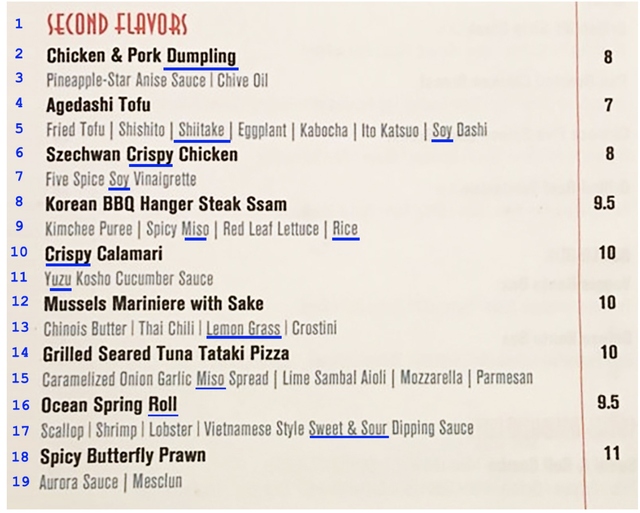

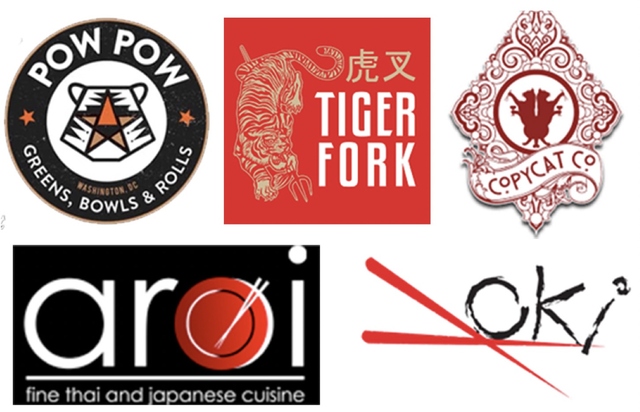 Figure 2.1: Logos
Figure 2.1: Logos 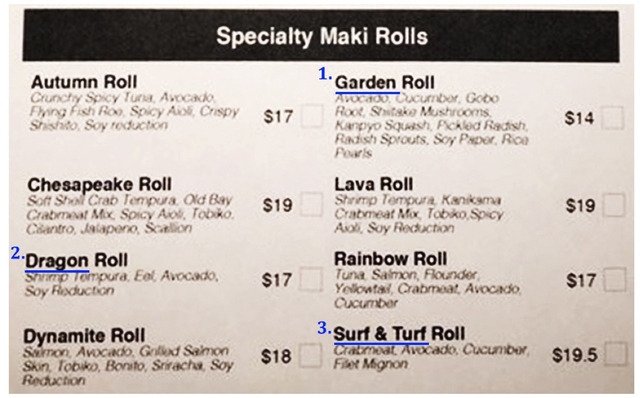
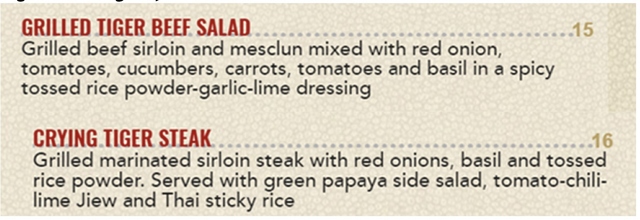
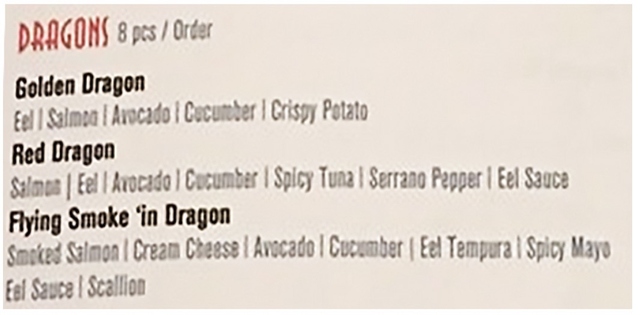
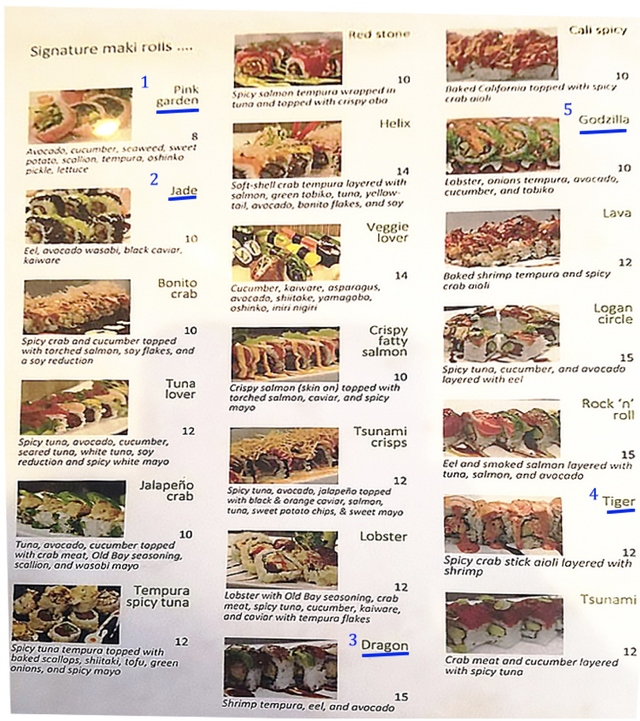 Figure 2.5: Baan Thai
Figure 2.5: Baan Thai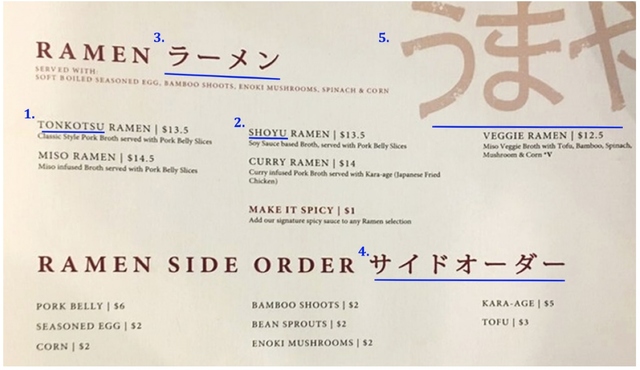
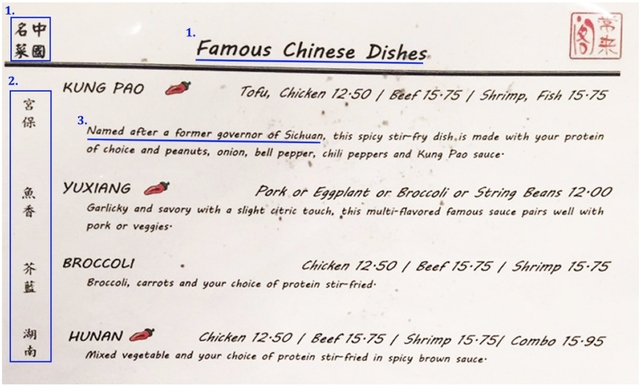
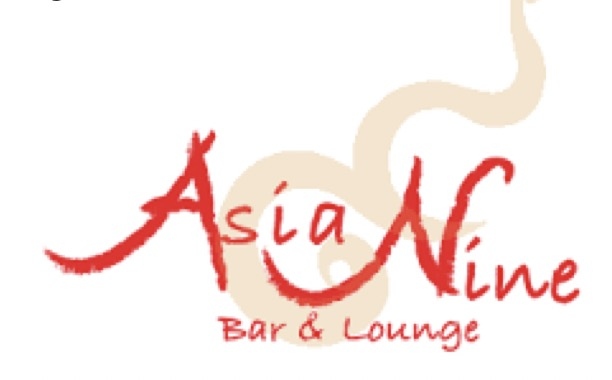
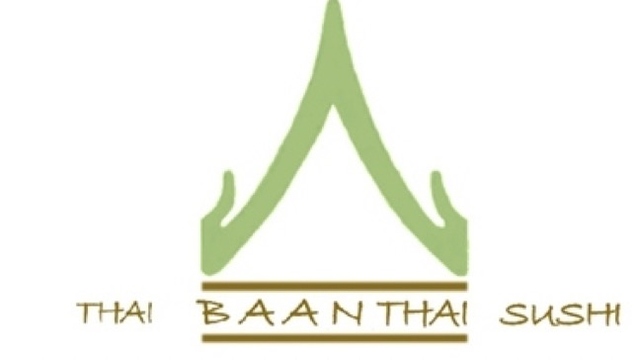
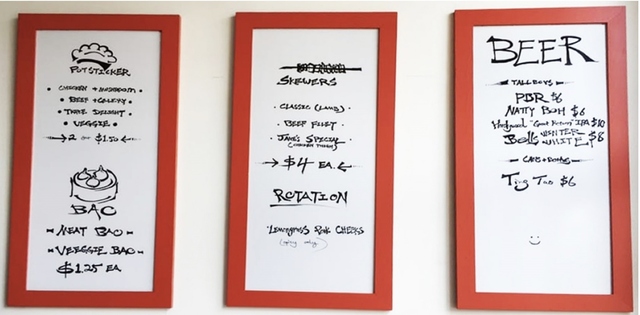

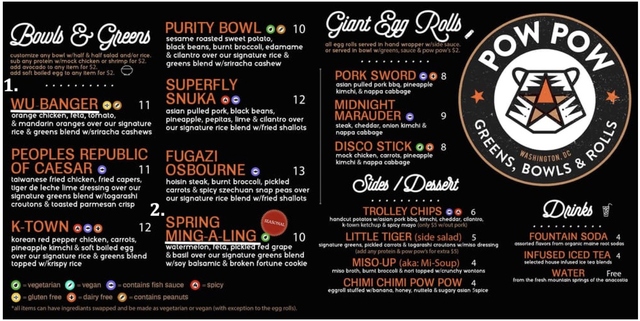
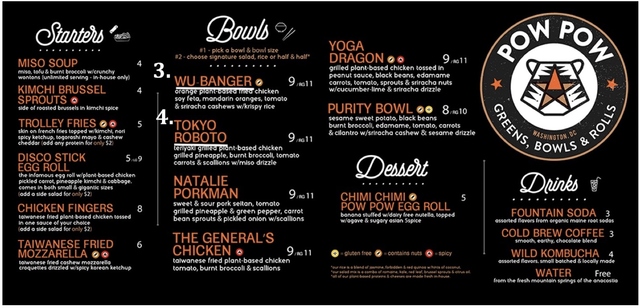
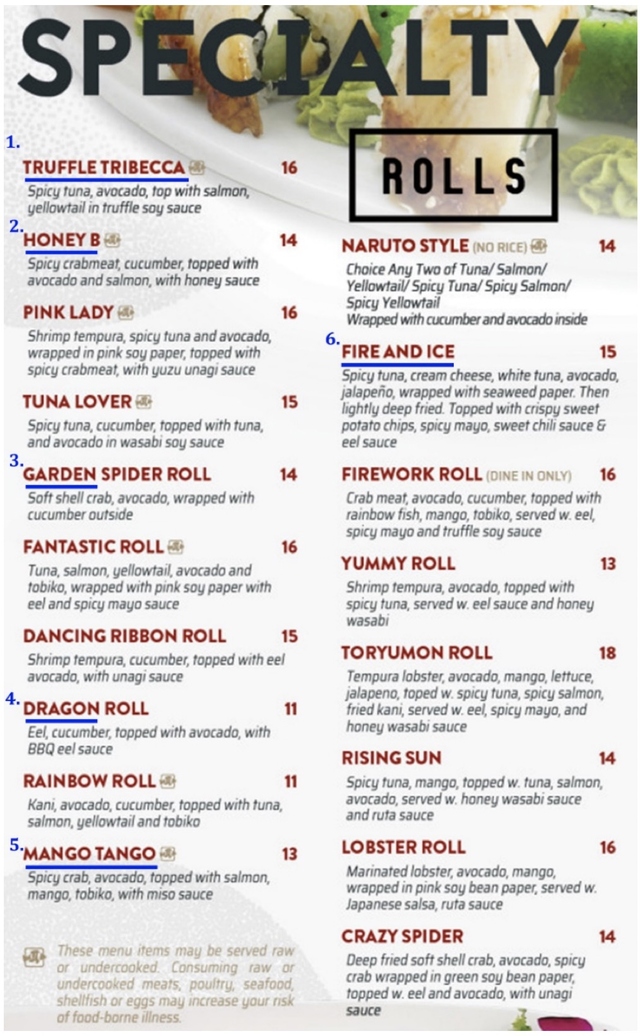
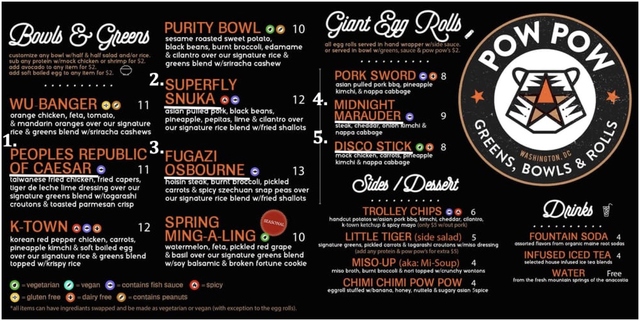

 Figure 5.3: Tenpenh
Figure 5.3: Tenpenh Figure 6.1: BKK Cookshop
Figure 6.1: BKK Cookshop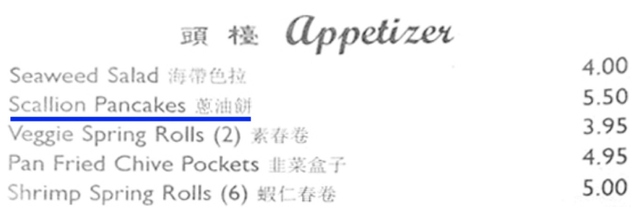 Figure 6.2: Dumplings and Beyond
Figure 6.2: Dumplings and Beyond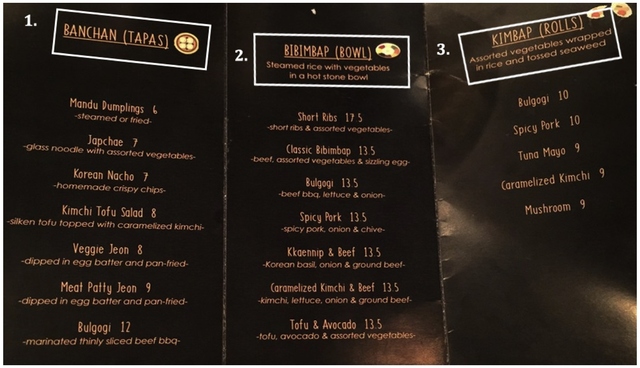 Figure 6.3: Zannchi
Figure 6.3: Zannchi


















